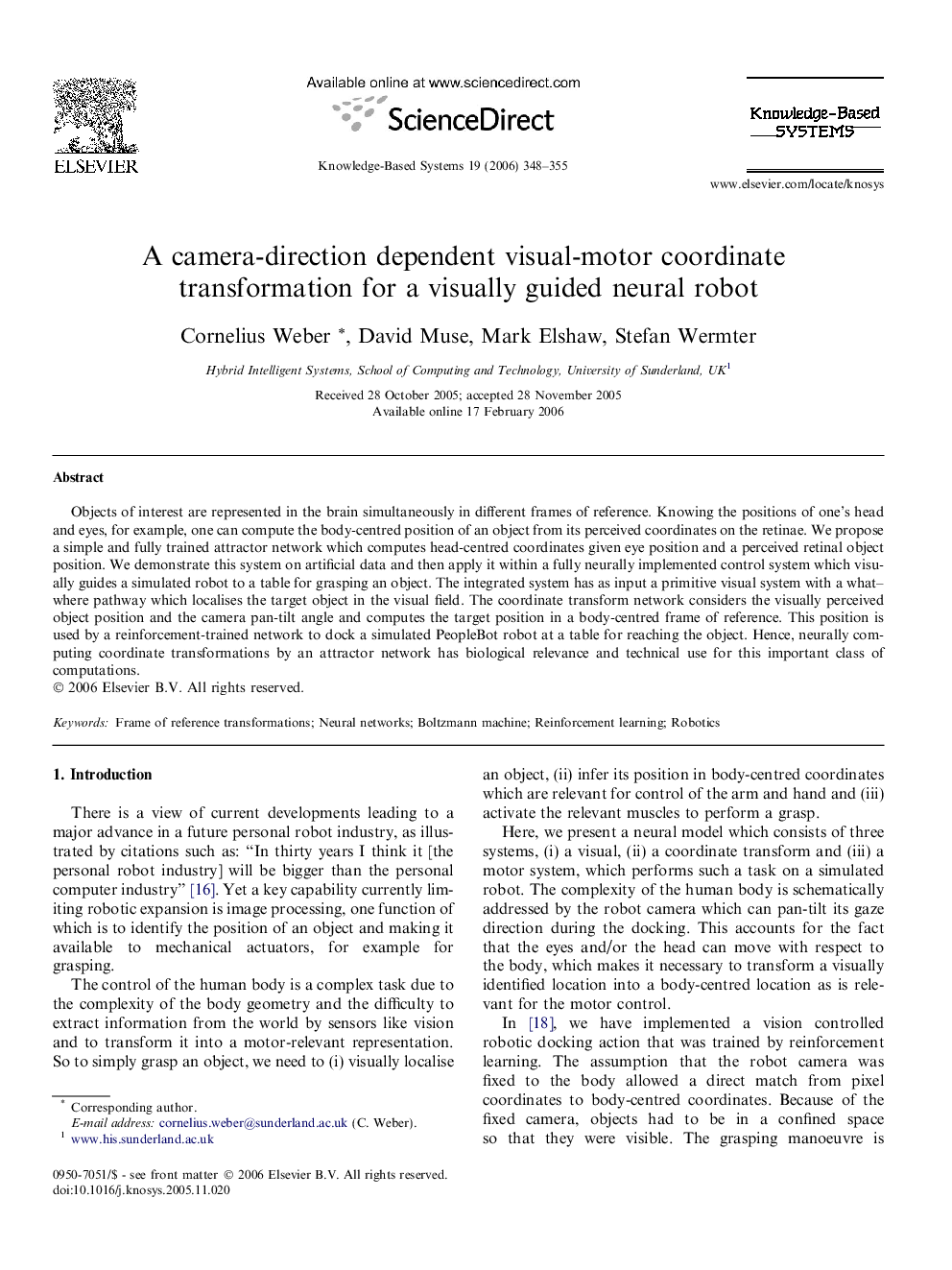| Article ID | Journal | Published Year | Pages | File Type |
|---|---|---|---|---|
| 403283 | Knowledge-Based Systems | 2006 | 8 Pages |
Objects of interest are represented in the brain simultaneously in different frames of reference. Knowing the positions of one’s head and eyes, for example, one can compute the body-centred position of an object from its perceived coordinates on the retinae. We propose a simple and fully trained attractor network which computes head-centred coordinates given eye position and a perceived retinal object position. We demonstrate this system on artificial data and then apply it within a fully neurally implemented control system which visually guides a simulated robot to a table for grasping an object. The integrated system has as input a primitive visual system with a what–where pathway which localises the target object in the visual field. The coordinate transform network considers the visually perceived object position and the camera pan-tilt angle and computes the target position in a body-centred frame of reference. This position is used by a reinforcement-trained network to dock a simulated PeopleBot robot at a table for reaching the object. Hence, neurally computing coordinate transformations by an attractor network has biological relevance and technical use for this important class of computations.
